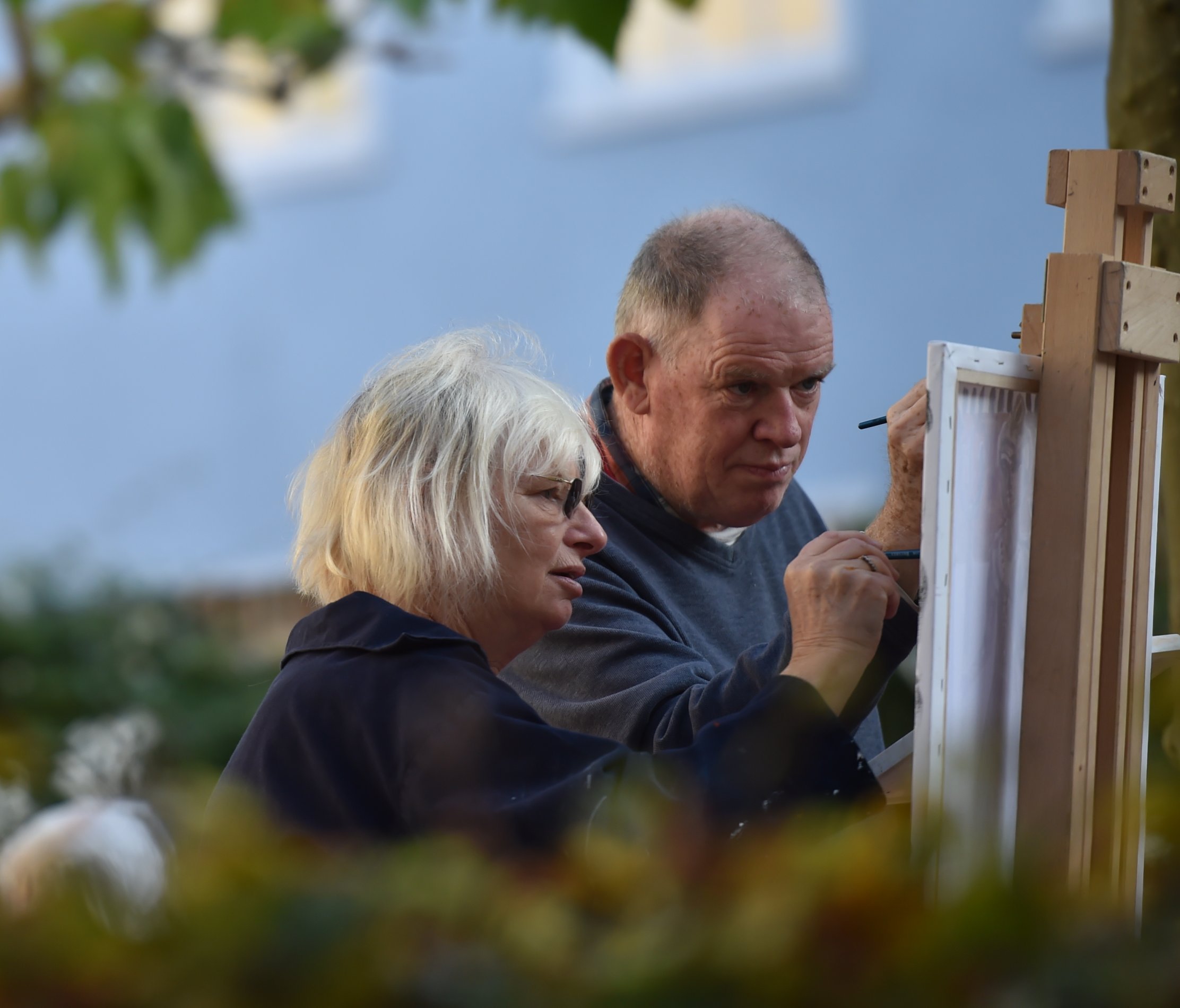
A community of equals
Firmly held core values and an awareness of potentially excluding behaviour have been key to the success of Pallant House Gallery’s community work, says Sandra Peaty.
In 2002 Chichester’s Pallant House Gallery established a community programme in response to the question: “How can we invite people with a range of support needs to use the gallery on an equal footing with any other visitor?”
The focus was quickly placed on people’s art interests – and remains firmly there – rather than on their disability, health condition or social circumstances. Today, the programme offers weekly informal drop-ins and structured workshops that have evolved in response to participants’ needs.
Some participants have returned after a year or more absence saying that getting back to the gallery kept them working towards better health
During the initial years of development, a set of core values emerged that included ‘Everyone is entitled to a creative life’ and ‘Treat everyone fairly and equally’. These values have provided a firm foundation for the community programme to develop inclusive practices that continue to evolve.
Last year we commissioned Susan Potter, an independent arts evaluator and researcher, to assess the effectiveness of our approach. We wanted to investigate the potential social impacts of the programme to provide evidence against which we could measure future developments. The study comprised an online questionnaire, focus group meetings and interviews with participants, key partners and stakeholder organisations.
Positive impacts
The findings in the report of the Community Programme Social Impact Study demonstrated that the programme’s impact has been far-reaching – for many people life-changing and for some life-saving. Over 90% of respondents said that it provided inspiring creative experiences, a safe place to work, and helped to build their confidence and self-esteem.
Positive impacts on the individuals who use the programme were evidenced by 83% of respondents reporting the development of new skills and 50% feeling less isolated or lonely. Overall, 36% reported improved health and wellbeing.
Partner organisations reported that the programme provided support for local health and adult social services and helped the district and county councils meet policy aims. Gallery employees, trustees and volunteers reported a sense of pride in working with the gallery as well as a more positive attitude towards the local community.
It became clear that the programme was an effective model of inclusive practice, bringing together a broad cross-section of the local community to share a common interest in art. It challenges the assumptions often made in regard to disability, mental health and other health conditions and it has been praised for its lasting commitment and sustained engagement with participants.
Lessons learnt
Initiatives such as ours offer museums and galleries an effective way of engaging their local communities. By offering creative opportunities that allow people to step out of the world of medical and social care and into inspiring and inclusive cultural spaces, previous social barriers and prejudices can be broken down.
Arts sector policy and the conditions attached to grants by major funders require the sector to engage with historically excluded groups. We have learnt that turning the good intentions of policy into practice requires the values underpinning the policy to be lived out first and foremost in the actions of all staff and volunteers. As such, we consciously adopt the organisation’s set of core values and are alert to our own values and any potential excluding behaviours. This self-awareness allows true inclusivity to flourish.
Absence of labels
We have learnt that labeling is stigmatising. There is strong evidence that working with people as unique creative individuals, rather than as members of a group with a label, not only benefits all involved in the programme but enriches the organisation as a whole. Those entering a public space to participate in activities advertised for a particular group, such as ‘learning disabled’ or ‘mental health user’, are likely to have a sense of separation and be on an unequal footing with any other visitor.
The avoidance of labeling participants has reduced prejudice and patronising responses. We recognise that the nature of funding can force organisations to work with labelled and targeted audiences, making the desire to be more inclusive difficult to achieve.
However, it is worthwhile asking: “Are we, unwittingly, reinforcing the negative aspects of ‘labelled’ groups by working with them in a publicly naming way? Are we inviting patronising responses and ‘othering’ judgments within our communities because our exclusive behaviours do not match our inclusive intentions? Worse, are our practices reinforcing stigma and exclusion?”
Flexible programmes
We discovered that flexible programmes can support those with complicated lives to participate when they are able. For those with chronic health conditions, our long-term offer takes away the stress and worry about losing their place when they cannot attend due to episodes of poor health. Some participants have returned after a year or more absence saying that getting back to the gallery kept them working towards better health.
By meeting everyone who wants to join the programme individually we are able to learn about their specific support needs and make a plan to manage and support them in a discreet way. This has enabled us to keep a clear focus on people’s art interests and aspirations.
A self-supporting creative community has emerged as a result of this inclusive practice. A community where mutual support, encouragement to take risks, celebrations of success and development of skills are a common experience.
Source of inspiration
We are now in the early stages of applying our model of inclusive practice to engage children and young people up to 25 years. We foresee natural opportunities for inter-generational activity and engagement, ensuring the gallery and its collections continue to be a source of inspiration now and for future generations.
Sandra Peaty is Head of Learning and Community at Pallant House Gallery.
pallant.org.uk
Join the Discussion
You must be logged in to post a comment.